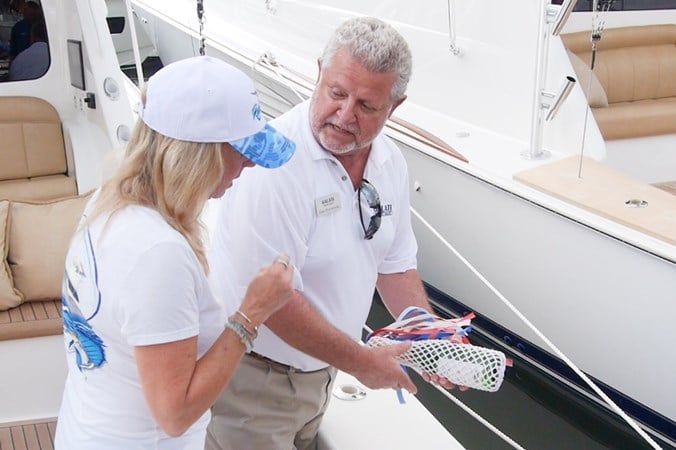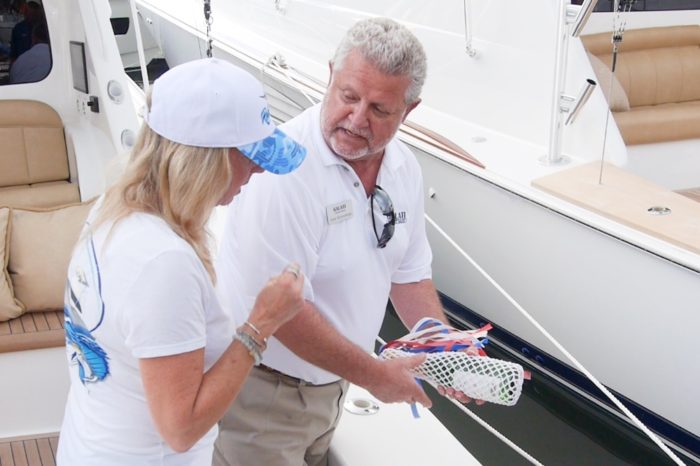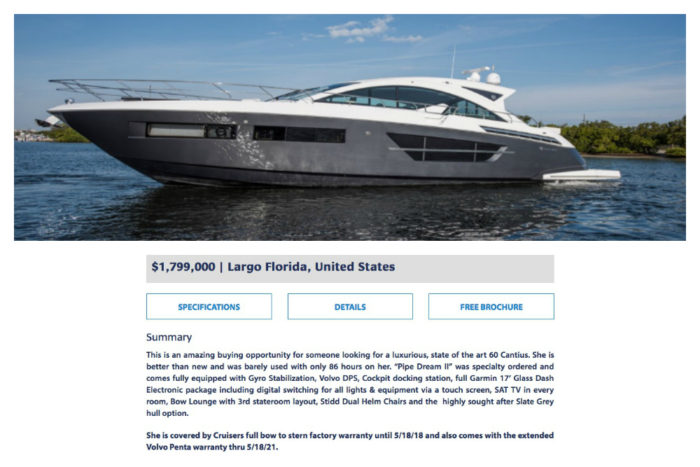Find exactly what you're looking for...

While Galati Yacht Sales sells many new yachts every year, the company also has a specialty in selling pre-owned boats. Earlier in this series, we looked at the process of buying new and pre-owned brokerage boats. Then in Part 3, we explored how the company provides service and support to owners on an ongoing basis. In this article and the accompanying video, staff and customers explain the comprehensive Galati approach to selling your boat when that day comes.
Finding the formula to create a strong boat-sales enterprise capable of selling 400-plus yachts annually, requires getting a number of things right. Strong marketing, deep product knowledge, and exceptional customer support are key requirements. But where do you start?
“There’s a direct correlation between a happy employee and a happy customer,” Galati COO Darren Plymale told us. “In our long-time family-owned business, both employees and customers are viewed as family. We understand the relationship between satisfied employees and happy customers. Which was substantiated when we became one of the initial Certified Dealers in 2005. Our company culture embodies our mission statement to ‘consistently exceed the expectations of our customers and our entire team understands our company’s philosophies.’”
Keys to product knowledge at the company are not only long-tenured staff, but also relationships with builders like Cruisers and Viking that are measured in decades. Every year, as new models arrive, Galati sales and service professionals undergo rigorous training to gain the knowledge necessary to prepare them for the new model year. In addition, for selling and managing yachts as they return for resale.
The pivotal result of the company’s philosophy is a consistently satisfied customer base. Based on our customer interviews, it’s clear that rather than focusing on providing an amazing “deal” in each sale, the company focuses on great value over time. For example, new-boat orientations are tailored to a customer’s skill set, teaching them what they need to know to use and maintain the boat. Then the company works to engage owners to get the most from the boating lifestyle. These combined efforts by sales, customer support, and events personnel deliver high levels of customer satisfaction, which translates to a high referral rate.

Darren Plymale, Galati Yacht Sales COO, describes the company’s marketing approach standing amidst a row of Vikings, one of its flagship brands. Ed Kukla photo
Most boat sellers rely on marketing strategies that include appearing at boat shows and utilizing web, email, and print marketing. What Galati sees as one of their key advantages is that they launch their programs from such a strong customer base. They also described other important differences.
For example, as customer support and sales teams work together, relationships with owners build out. Plymale said, “Our customer promotions through tournament fishing and cruising events provide us one-on-one time with our customers. We’re constantly consulting with them on their experience with the yachts. Which helps us provide valuable feedback to our team and most of all our builder relationships.”
The combination of relationship building, a deep understanding of how people are using their boats, and support where customers are enjoying yachting become a strong marketing channel on its own. Galati has no doubt that these events support their overall sales efforts. All while allowing customers to spend more time on the water with family and friends.
Another key aspect of the Galati strategy is to sell both trade-ins and brokerage boats through the same channel. This welcomes co-brokerage opportunities presented by brokers from other companies. Combining these two resources improves their marketing within the brokerage channel. It also provides greater reach for both brokerage sellers and trade-in yachts.
Plymale said that the company’s investment in boat-show marketing continues to be a priority. “We’re convinced it is a necessity to be well represented at the shows, it’s a touch-and-feel opportunity. Our new and brokerage sales depend on our show efforts as the customers buying habits have changed—if you are not there at the shows, you’re nowhere.”
Plymale also pointed out that the company has a significant overall marketing budget and is very aggressive with web marketing, email and print marketing. On websites such as YachtWorld, Galati invests extra to put customer listings in the spotlight.

Building strong relationships with customers is a favorite activity of Stan Hoynowski, one of Galati’s sales professionals. Ed Kukla photo
Sales professional Stan Hoynowski explained his job to represent a seller in clear, simple terms. “We have a responsibility to the seller to get them the best possible deal and maintain the highest standard of ethics.”
Galati team members like Stan work with customers to create the best listings possible. Calling out what is unique and noteworthy about the boat. Product knowledge makes a difference here. As well as the data Galati has available on what prices boats are selling for and how quickly. Understanding the competitive landscape for a boat of a particular brand and age is vital. Both in creating a listing and establishing realistic prices.
This is the first step for the sales professional to represent the seller effectively. Communications is the key after that.
“I try to put the buyer in the shoes of the seller or the seller in the shoes of the buyer,” sales professional Jim Nelson said, “and help them see it from the other side as we’re working towards an agreed-upon price.”

This 60 Cantius listing in 2017 highlights installed options that help the boat stand out from the competition. Which includes new 60s.
When Mike Galati and his wife Anna Maria moved to Florida and purchased the marina in 1970, the family included five children. They all worked in the business from an early age. The primary lesson that Mike delivered was “if you take care of your customers, they will always take care of you.”
On the strength of that philosophy and a shared work ethic, the family business survived the father’s passing in 1992. Remarkably, the company grew rapidly under the second generation’s collaborative ownership. Now, the third generation has joined the company. Since they’ve grown up in the business, they understand this philosophy firsthand.
“Our commitment to the customer relationship is paramount,” says Plymale. Plymale joined Joe, Carmine, Mike, Fran, and Chris Galati in a management position several years ago. “We consider our customers like family, and letting family members down is not an option.”
Compare (0/3)